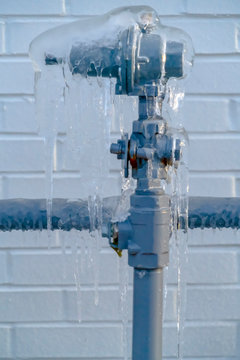Protecting Your Pipes from Cold Weather Issues: Essential Approaches
Protecting Your Pipes from Cold Weather Issues: Essential Approaches
Blog Article
They are making several great points on Helpful Tips to Prevent Frozen Pipes this Winter overall in the article in the next paragraphs.

Cold weather can wreak havoc on your pipes, particularly by freezing pipelines. Right here's how to prevent it from taking place and what to do if it does.
Intro
As temperatures decline, the threat of frozen pipes increases, potentially resulting in costly repair services and water damage. Recognizing how to avoid icy pipes is important for home owners in chilly climates.
Understanding Icy Pipes
What causes pipes to ice up?
Pipes freeze when exposed to temperature levels below 32 ° F (0 ° C) for extended periods. As water inside the pipes ices up, it increases, taxing the pipeline walls and possibly causing them to burst.
Dangers and damages
Icy pipes can bring about water system disturbances, residential property damage, and costly repair work. Ruptured pipelines can flooding homes and create comprehensive architectural damages.
Signs of Frozen Water Lines
Determining icy pipelines early can prevent them from breaking.
Just how to identify icy pipes
Try to find decreased water circulation from taps, unusual smells or noises from pipelines, and noticeable frost on subjected pipelines.
Prevention Tips
Shielding susceptible pipelines
Cover pipes in insulation sleeves or make use of warmth tape to safeguard them from freezing temperature levels. Concentrate on pipelines in unheated or external locations of the home.
Home heating techniques
Keep indoor spaces effectively heated, particularly areas with plumbing. Open cabinet doors to allow cozy air to distribute around pipelines under sinks.
Securing Exterior Pipes
Yard pipes and outside faucets
Disconnect and drain pipes yard hose pipes before winter. Mount frost-proof faucets or cover outside taps with protected caps.
What to Do If Your Pipes Freeze
Immediate activities to take
If you think icy pipes, maintain faucets open to relieve stress as the ice thaws. Utilize a hairdryer or towels soaked in hot water to thaw pipelines slowly.
Long-Term Solutions
Architectural changes
Take into consideration rerouting pipes away from outside wall surfaces or unheated locations. Include extra insulation to attics, basements, and crawl spaces.
Updating insulation
Purchase high-quality insulation for pipes, attics, and wall surfaces. Correct insulation aids keep regular temperature levels and lowers the threat of icy pipelines.
Verdict
Protecting against frozen pipes requires proactive steps and quick responses. By understanding the causes, indicators, and safety nets, home owners can secure their plumbing during winter.
5 Ways to Prevent Frozen Pipes
Drain Outdoor Faucets and Disconnect Hoses
First, close the shut-off valve that controls the flow of water in the pipe to your outdoor faucet. Then, head outside to disconnect and drain your hose and open the outdoor faucet to allow the water to completely drain out of the line. Turn off the faucet when done. Finally, head back to the shut-off valve and drain the remaining water inside the pipe into a bucket or container. Additionally, if you have a home irrigation system, you should consider hiring an expert to clear the system of water each year.
Insulate Pipes
One of the best and most cost-effective methods for preventing frozen water pipes is to wrap your pipes with insulation. This is especially important for areas in your home that aren’t exposed to heat, such as an attic. We suggest using foam sleeves, which can typically be found at your local hardware store.
Keep Heat Running at 65
Your pipes are located inside your walls, and the temperature there is much colder than the rest of the house. To prevent your pipes from freezing, The Insurance Information Institute suggests that you keep your home heated to at least 65 degrees, even when traveling. You may want to invest in smart devices that can keep an eye on the temperature in your home while you’re away.
Leave Water Dripping
Moving water — even a small trickle — can prevent ice from forming inside your pipes. When freezing temps are imminent, start a drip of water from all faucets that serve exposed pipes. Leaving a few faucets running will also help relieve pressure inside the pipes and help prevent a rupture if the water inside freezes.
Open Cupboard Doors
Warm your kitchen and bathroom pipes by opening cupboards and vanities. You should also leave your interior doors ajar to help warm air circulate evenly throughout your home.

I'm very fascinated by Helpful Tips to Prevent Frozen Pipes this Winter and I'm hoping you liked the post. Sharing is good. One never knows, you could be helping someone out. We cherish reading our article about How to Prevent Your Pipes From Freezing.
Call Us Now Report this page